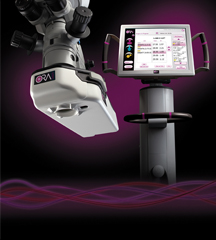If you need cataract surgery, one of the things to consider is what kind of IOL you’re going to get. The standard IOL option is called a monofocal IOL and is included in the cost of the procedure.
A monofocal IOL can help you achieve good enough vision at one distance. However, if you want your best vision while reducing your dependence on visual aids, you need to consider the merits of a premium IOL.
Keep reading to find out why the benefits of premium IOLs are truly worth it!
Cataract Surgery and IOLs

To understand what an IOL is, you must first understand how cataract surgery works. The procedure removes your cataract by removing the natural lens. The natural lens is where the cataract forms.
This would leave you without any lens in your eye, making it very hard to see as your eye would be unable to focus light. But instead of not having a lens, you’ll replace your lens with an intraocular lens or IOL.
An IOL is a lens that takes the place of the natural lens to help you see clearly. There are many kinds of IOLs, meaning they can correct refractive errors and presbyopia, depending on the type you choose. However, monofocal IOLs cannot provide vision as good as premium IOLs.
What are Premium IOLs?
Standard IOLs are monofocal lenses, which can only correct one distance. Other uncorrected distances require using visual aids to see clearly.
Think of a monofocal like the standard lens of a pair of glasses in that it’s uniform all over. You can also set it to one refractive power. This allows the lens to help you see up close or at a distance, but you’ll still need glasses to see at the opposite distance.
Some people choose monovision with monofocal IOLs. Monovision allows you to have one lens put in your eye for seeing up close and another lens put in the other eye for seeing at a distance.
With monovision, you can achieve better vision between the two distances. However, not everyone will qualify for monovision.
The other thing worth knowing is that you can achieve significantly better vision with a premium IOL at a broader range of distances. Premium IOLs can correct refractive errors and presbyopia to a higher degree to reduce dependence on visual aids, including reading glasses.
Premium IOLs have extra costs. Insurance will not cover them. However, most patients find that they are well worth the cost.
There are many premium IOLs to choose from, ensuring you can have absolute control over your vision after cataract surgery.
Premium IOL Options
Sugiki Portis Eye Center is proud to offer several premium IOL options to our patients, including:
Multifocal IOLs
Multifocal IOLs are lenses with rings extending from the middle that alternate between two refractive powers: one up close and one far away. These rings allow your eyes to look through the right part of the lens to best see at the distance you’re at.
You’ll have clearer vision up close and at a distance and can look forward to things being crisper and sharper when they are right in front of you.
Trifocal IOLs

The trifocal IOL is like the multifocal, but the lens has three alternating sections: one for up close, one for far away, and one for seeing at a middle distance. Having three alternating sections on the IOL allows you to see more clearly up close and at arm’s length, giving you a more comprehensive range of clear vision.
Extended Depth of Focus IOLs
Extended Depth of Focus (EDOF) IOLs give you an even greater range of vision. The lenses aren’t broken up cleanly into different focal points. Instead, these IOLs extend the focal point, letting you see more clearly within all distances inside the focal point.
This reduces the glare and halos that some patients experience with multifocal lenses.
Accommodating IOLs
Accommodating IOLs are lenses that change shape to focus up close, much like your natural lens would. These IOLs mimic how your natural lens works so that you can see at multiple distances in a very natural way.
Toric IOLs
Toric lenses are designed specifically to correct astigmatism. These IOLs are the only lenses specifically designed to correct astigmatism. Most premium IOLs come in a toric model.
Apthera IC8 IOLs
The Apthera IC8 IOL also corrects astigmatism, often at a greater range of vision than standard monofocal toric lenses. It’s usually implanted in only one eye and paired with a monofocal toric lens to achieve an enhanced, astigmatism-correcting monovision.
Precision IOL Selection: ORA Cataract Surgery System

Your cataract surgeon at Sugiki Portis Yim Eye Center can help you decide what IOL is right for you. They will recommend the best IOL for you based on your lifestyle, visual needs, and goals after cataract surgery.
Sugiki Portis Yim Eye Center is also proud to offer our patients the ability to undergo cataract surgery with the Optiwave Refractive Analysis (ORA) Cataract Surgery System. The ORA system makes a real-time analysis of your eye during cataract surgery.
This system allows your cataract surgeon to analyze and monitor your eye throughout the procedure and helps them pick the right prescription for your IOL. The ORA system can predict, based on its analysis of your eye, what prescription you’ll need for the best correction of your vision after removing your natural lens.
The ORA system is excellent for many patients, especially those with astigmatism and those who have had LASIK. This is because the system can sense minute imperfections in how light refracts through your eye, allowing your cataract surgeon to choose the exact prescription and placement for the IOL.
Are you ready to achieve your best possible vision? It all starts by requesting a cataract consultation at Sugiki Portis Yim Eye Center in Honolulu, HI! Better vision could be yours, so why delay any longer?





